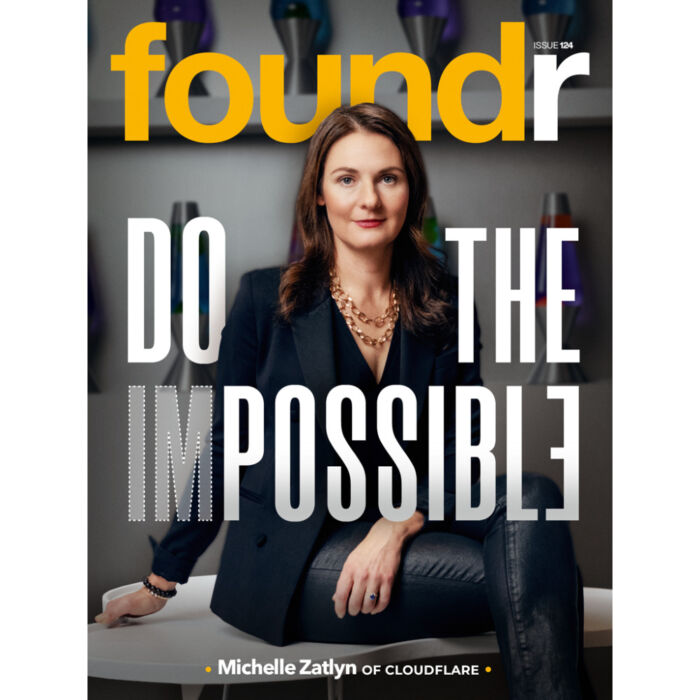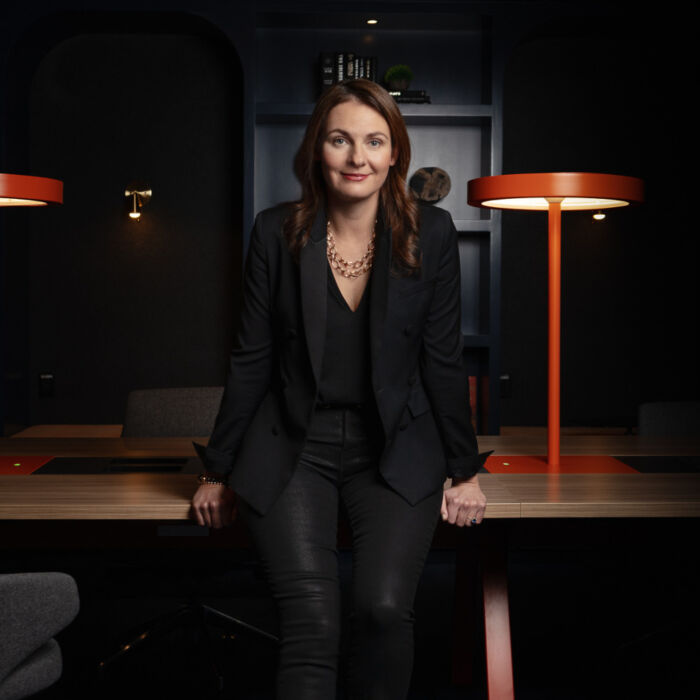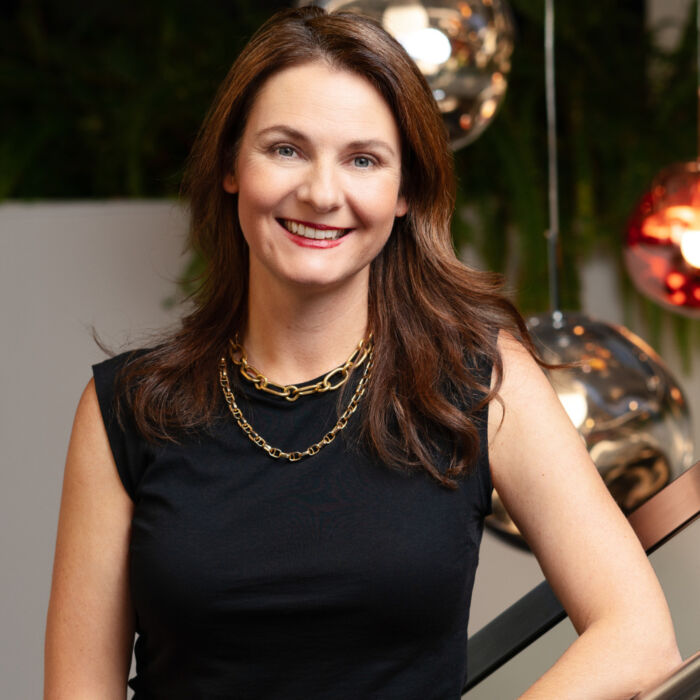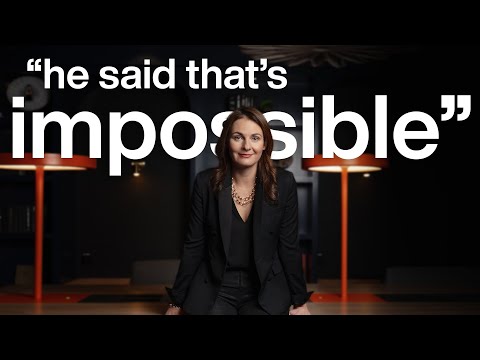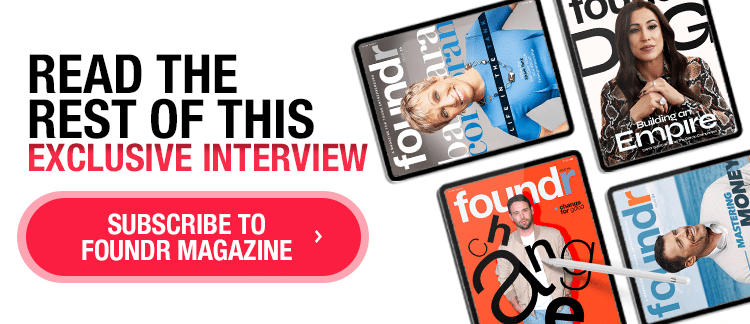Foundr Magazine publishes in-depth interviews with the world’s greatest entrepreneurs. Our articles highlight key takeaways from each month’s cover feature. We talked with Michelle Zatlyn, co-founder of Cloudflare, about creating a tech disruptor using a freemium product. To read more, subscribe to the magazine.
—————
Walking into the restaurant, Michelle Zatlyn had no idea what to expect.
Goldman Sachs had invited her to a Silicon Valley technology event at a packed local restaurant. Zatlyn was still relatively new to Northern California, and her web security company, Cloudflare, had just started to build momentum. She knew the invite was a favor but didn’t care. The opportunity to rub shoulders with industry giants could be momentous for Cloudflare.
One of those giants happened to be seated right next to her.
After exchanging pleasantries, she gave him the rundown about Cloudflare. The startup was a global cloud security network for all business sizes that took five minutes to use rather than the typical cybersecurity implementation that took weeks.
The famous founder stared back while she walked through the pitch. Then he responded.
“He was grilling me, and that’s fine. Grill me. But he didn’t believe anything I said. Not one thing,” Zatlyn says.
For each doubting question, Zatlyn responded with an honest answer. Then, he began responding with one word—impossible.
Again and again, Zatlyn walked him through the vision of Cloudflare, but all he said was, “Impossible.”
Eventually, her patience waned.
“I said, ‘Are you calling me a liar?’ And you can imagine this person did not take that very well,” Zatlyn says. “I’m like, ‘You’ve got to check your assumptions.’”
Zatlyn remembers walking away from that dinner feeling frustrated. Sure, the big-shot founder controlled the power dynamics at the table—Zatlyn being a relatively unknown founder in comparison—but the business she believed in had been disregarded. She took it personally.
“One of the things that I’ve said to myself a lot along the way, especially on the dark days, is you’ve got to keep yourself on the field,” Zatlyn says.
“You’ve got to keep yourself in the game.”
One awkward dinner didn’t define Zatlyn nor thwart her from believing in herself, her team, and her business. Because she stayed on the field, Cloudflare today has millions of customers worldwide, surpassed a $1 billion revenue run rate, and employs 3,300 team members. Zatlyn currently serves as the publicly traded company’s co-founder, president, and COO.
Impossibility wasn’t a reason to stop. For Zatlyn, it’s never been a factor.
Freemium Launch
On a blue-lit stage in a packed San Francisco conference hall, Prince awkwardly shimmies back and forth while the audio-video crew attempts to connect his presentation to the projection screens. Three judges in professional business attire sit behind Prince in low white couches that are more Star Trek than midcentury modern design.
“I apologize,” Prince says sincerely with a hint of nervousness.
He’s wearing dark blue jeans and a simple black blazer over a dark gray T-shirt with the logo of an orange cloud. The crowd murmurs as he walks over to the AV table to help. Zatlyn’s already troubleshooting the slides, clad in a white blazer, the inverse of Prince, with the same graphic tee.
After a minute of filler by the event host, the correct slides are up, and Prince quickly introduces Zatlyn and Holloway. Then he jumps into a seven-minute simultaneous pitch and launch of Cloudflare. He clearly outlines the benefits of Cloudflare’s security for “the little guys” and even demonstrates its simple, five-minute sign-up.
He concludes the presentation: “Cloudflare’s got your back, and we won’t rest until your site is fast, safe, and secure.”
That was almost 13 years ago at the first TechCrunch Disrupt San Francisco, a technology startup pitch competition and industry event. Cloudflare won the 2010 competition and, more importantly, captured its ideal users.
“Our audience [was] all technical folks in the audience. All those people had blogs or small businesses, [and] a bunch of them signed up,” Zatlyn says. She mimes a line graph. “Literally, our numbers have been up to the right ever since the day we launched. They’ve never stopped growing.”
But weeks before Zatlyn stood stage right of Prince at the TechCrunch event, she was embarrassed by Cloudflare.
“We were fighting a lot internally,” Zatlyn says.
“There [were] about six of us at the time [debating] about whether it was ready or not. I said, ‘Just ship it.’”
Zatlyn didn’t think they had enough data to feel secure about Cloudflare’s solidity as a business model, but they’d missed their product demo deadline and needed to launch. So Cloudflare was out of the bag, marketing its “freemium” product (which is still available in 2023). “Freemium” means offering a free product version with additional options to upgrade.
Within a few weeks of launch, Zatlyn contacted users and recorded Skype sessions about their experience.
“And what was amazing was these customers who had signed up for this product that I was really very embarrassed about were writing in saying [things like]:”
“…Oh my God, your product stopped all the trash traffic coming to my site. “
“It off-loaded all the bots coming to my server.”
“For the first time in five years, my pager didn’t go off last night.”
“I actually had a full night’s sleep for the first time in five years.”
It was another visceral experience for Zatlyn.
“That gave me a lot of validation that I had made the right choice, that we were working on the right things,” Zatlyn says. “And then over time, I was like, ‘OK, we’re solving a real, meaningful problem.’”
Within a year of launch, Zatlyn felt Cloudflare became validated as a business because their goals with the freemium product were being met. The outcomes included:
- Increased traffic that helped build their global network.
- Free users that converted to paying customers.
- More word-of-mouth advocates at enterprise workplaces.
- Mass amounts of data to build new products from.
- A battle-tested quality assurance team of free users to test products.
- An employee recruitment pathway from users of Cloudflare.
“Entrepreneurs get into trouble when there’s only one reason they have a free service. They think it’s a marketing ploy, and some of them pay you,” Zatlyn says. “But it’s really good if you [can] figure out other business reasons why you need that free service that help make your business model better.”
In 2011, Cloudflare raised $20 million in its Series B funding. The momentum continued year after year as they added customers at the free, paid, and enterprise levels. In 2019, Cloudflare went public. Zatlyn says the achievements all go back to receiving that visceral reaction from users when they first launched.
“We were supercharging their sites, supercharging their online presences, and it was creating a lot of joy for them,” Zatlyn says.
Battle-Tested
More than a decade after its launch, Cloudflare now stops billions of cyberattacks a day for millions of customers across the globe. But for Zatlyn, the battles fought while building Cloudflare have left scar tissue, especially as one of few women founders leading a public tech business.
“The numbers are bad, and they’re not moving fast enough,” Zatlyn says about the percentage of women and minorities in tech. “And so we’ve got a lot of work to do, and I think that’s up to every single person to build and influence that.”
Even though she’s experienced moments in her career when her gender, age, or outsider status have been used against her, at Cloudflare, she serves as a beacon for the industry.
“As an early-stage founder, I would’ve been really uncomfortable with that,” Zatlyn says. “But today, I know that, and I’m a role model for people at Cloudflare and in the industry and for other working moms and women. I’m getting more comfortable saying that and admitting that and saying, ‘Great, I’m proud of that, and I want to do the best I can.’”
Zatlyn admits she never saw herself as an entrepreneur who needed to be their own boss. She didn’t have it all figured out as a student at Harvard, standing on stage at TechCrunch Disrupt, or even today.
“I think if you’re a founder and you’re not sure, that’s OK,” she says.
“There are lots of ways to be successful. If you talk to a hundred successful founders, you will get a hundred different ways.”
She says spotting an opportunity and falling in love with a solution is how she’s found purpose through any problem, crisis, or attack.
“I love our mission to help build a better internet,” Zatlyn says. “Because the internet’s becoming more important for every single business. The fact that we’re there every step of the way, helping them be a strategic partner? I’m so proud of that.”
Zatlyn says she used to run into the famous founder who said Cloudflare was impossible. Eventually, they reconciled, and the founder admitted the business idea was possible and a necessary disruptor. Through that experience, Zatlyn learned that rejection and doubt from others happen, especially at the beginning. But instead of reacting with bitterness, Zatlyn advises other founders to stay in the game.
“You don’t need to win them over. Everyone comes around at some point, and your job is to keep winning on the field, gaining progress, gaining ground …, finding the people who do want to believe and be championed,” Zatlyn says. “[If you] spend your time on that, you’ll be much happier and productive for it.”
6 Business Reasons to Have a Freemium Product
- Increase traffic to your brand.
- Convert free users to paying customers.
- Gain word-of-mouth advocates.
- Accumulate more user data to make informed decisions.
- Utilize free users for product testing.
- Recruit employees from free users.
The post Michelle Zatlyn: A Silicon Valley Outsider Who Did the Impossible appeared first on Foundr.

